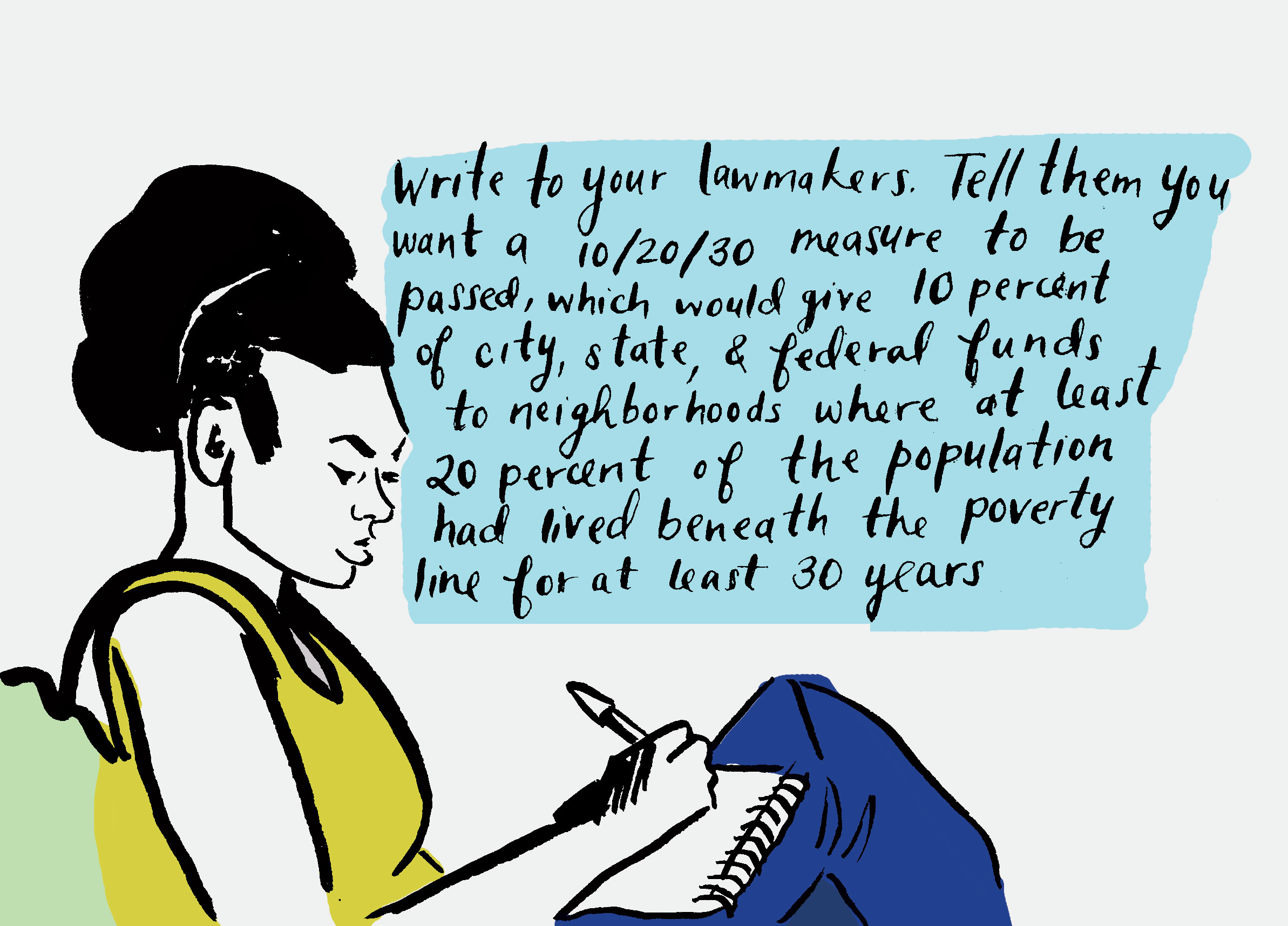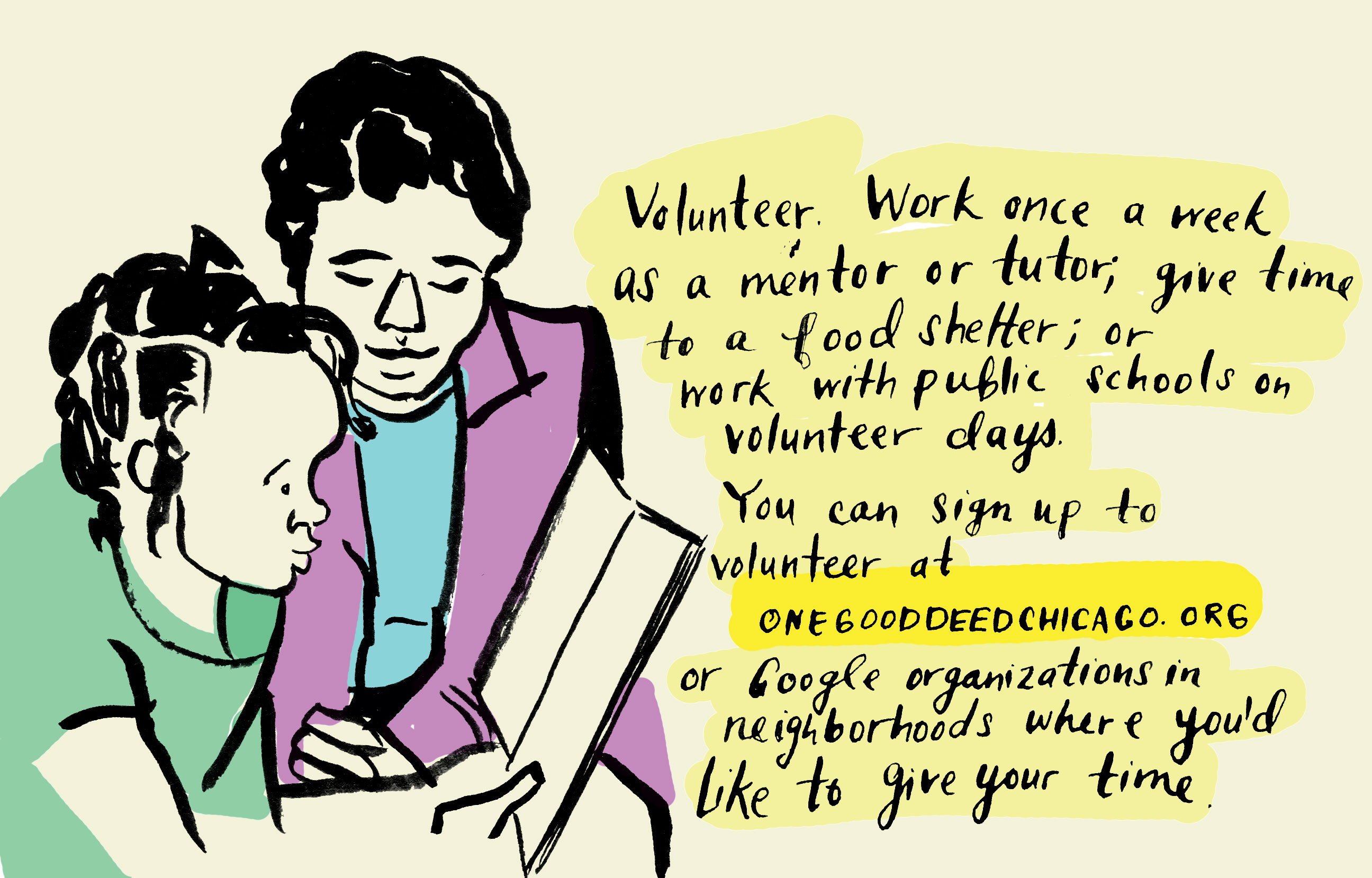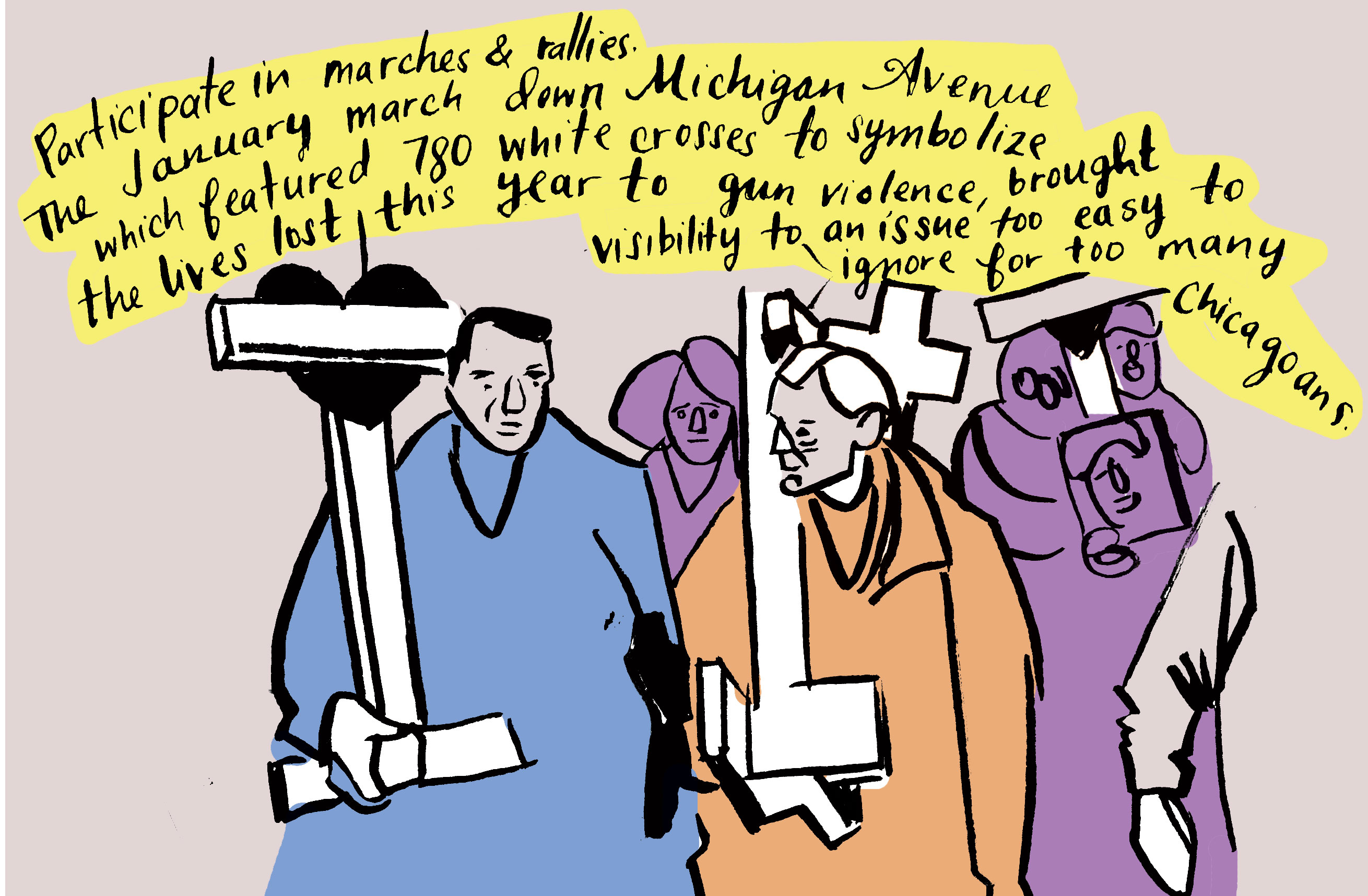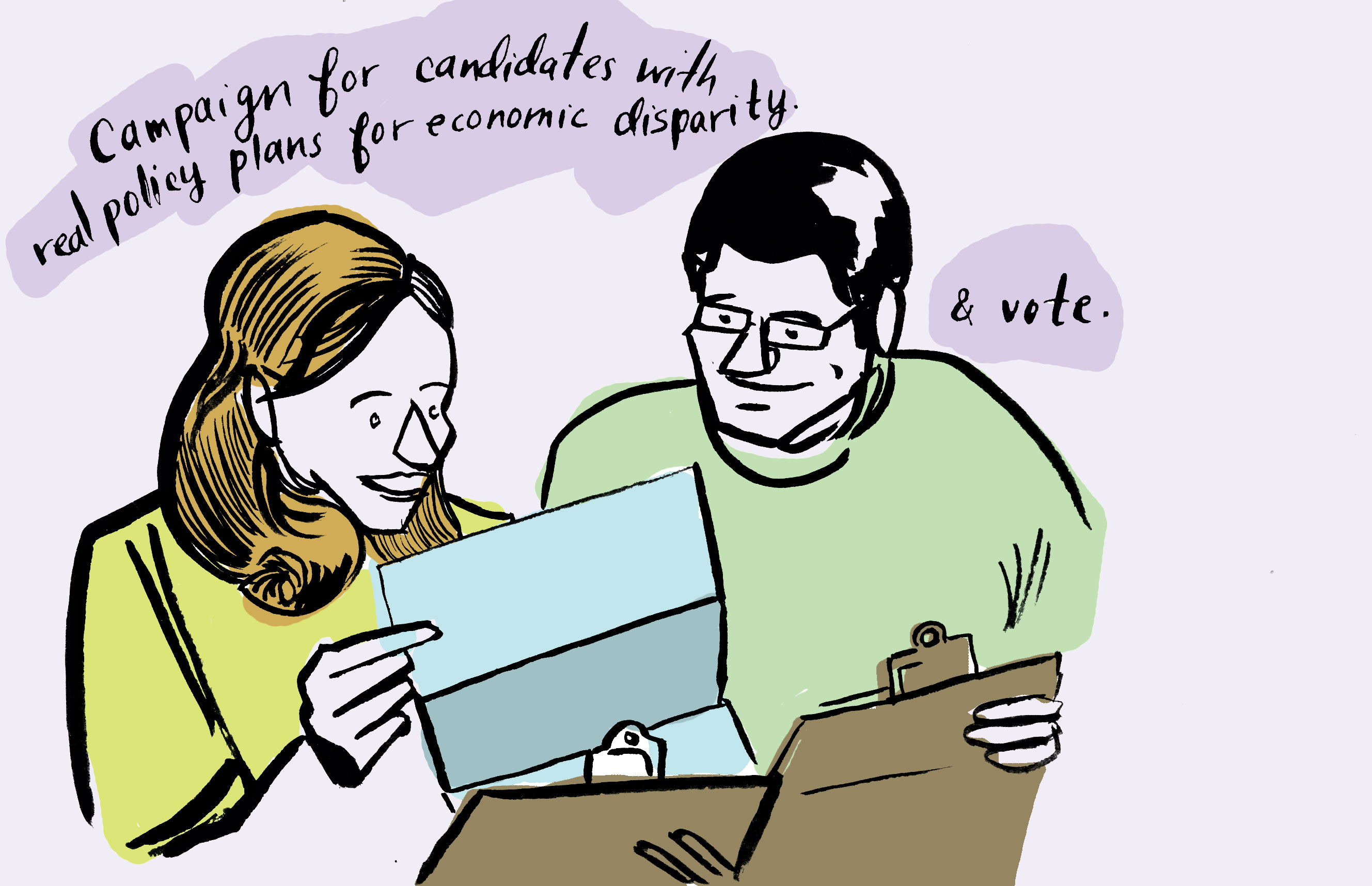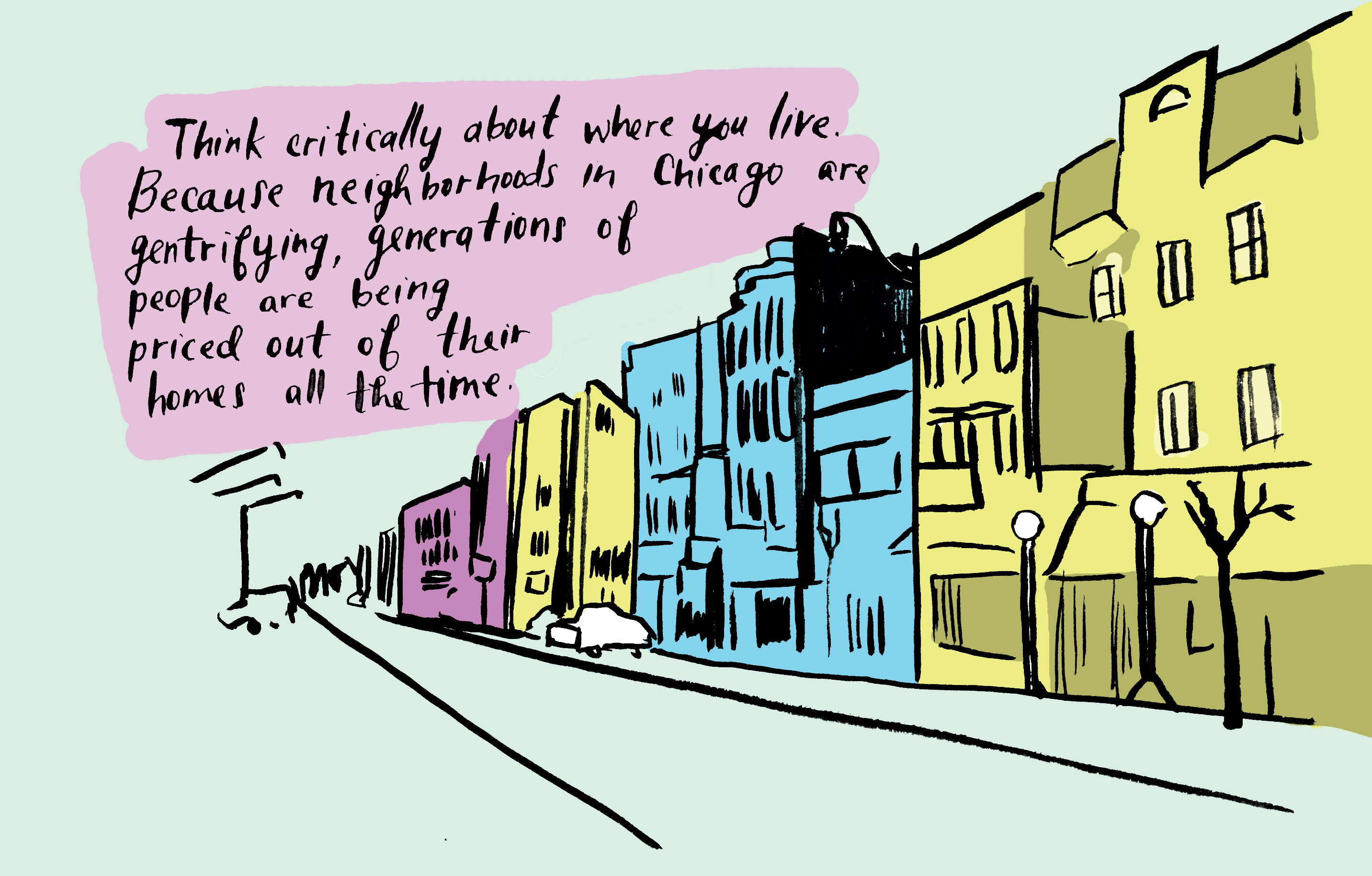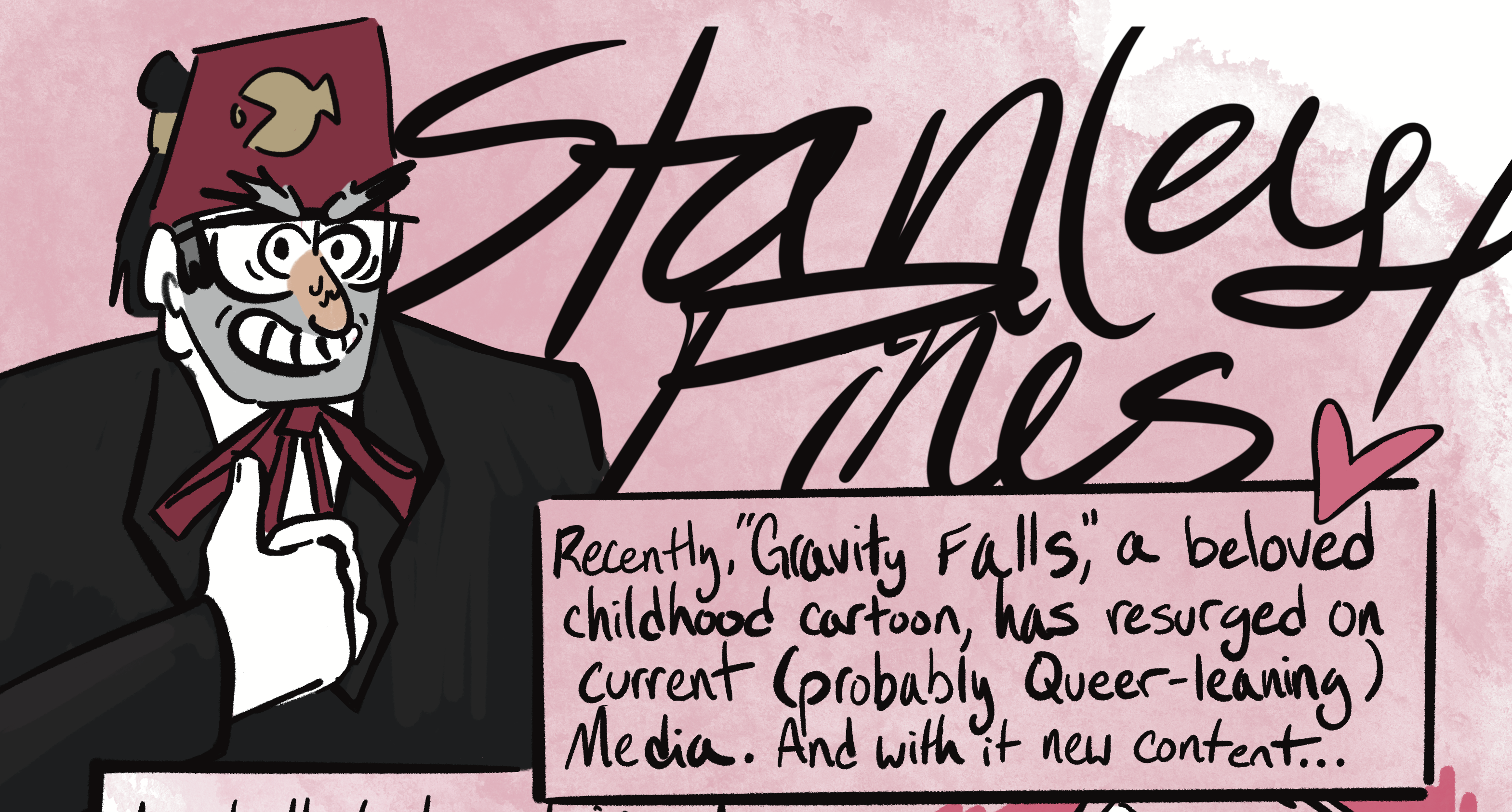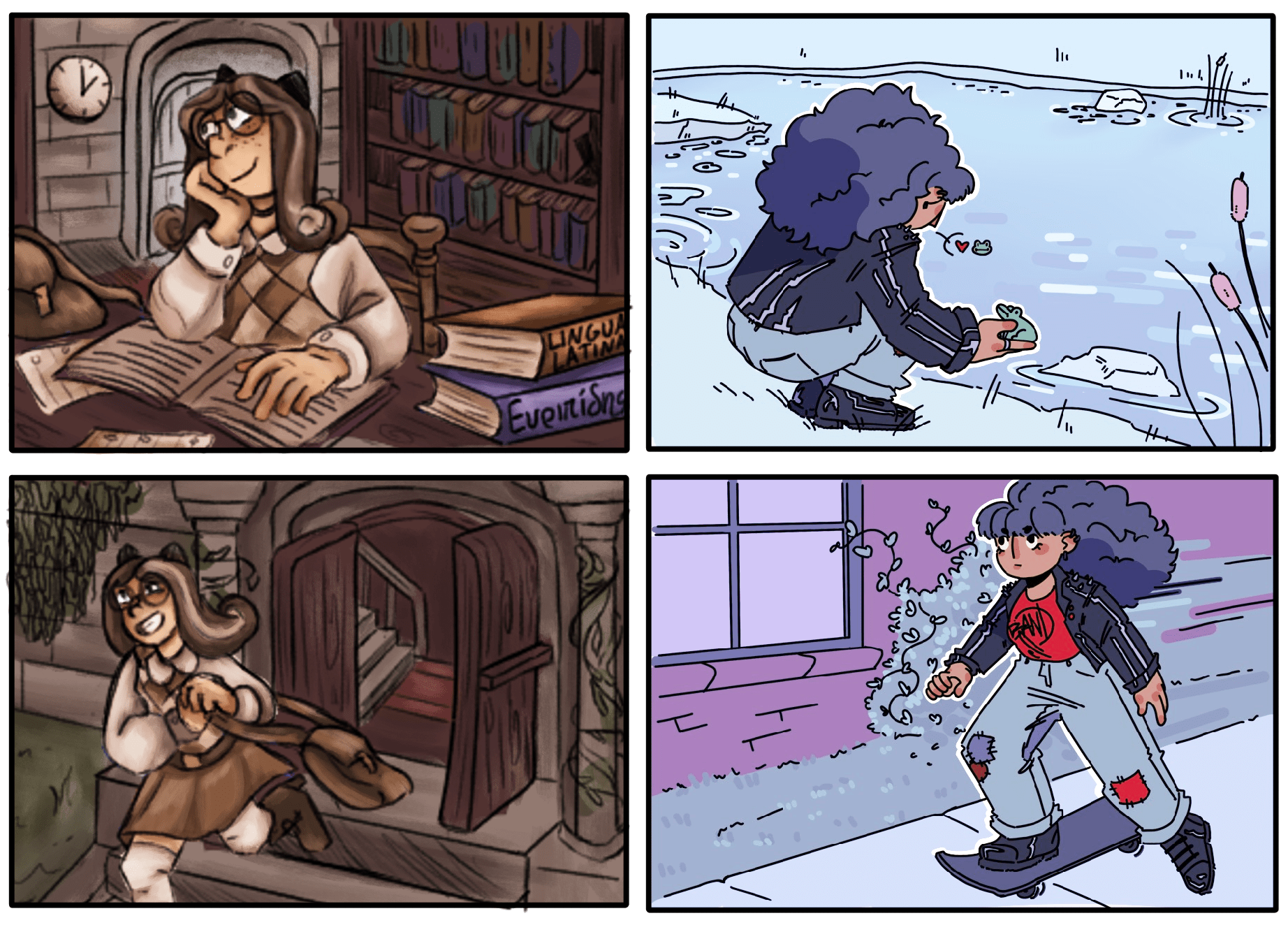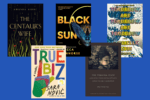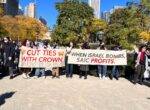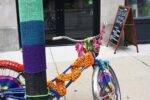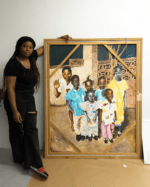Illustrations by Sophie Lucido Johnson.
Over the first two days of 2017, 55 people were shot in Chicago; five were killed.
It’s a grim spillover from a particularly bloody year for the city: The number of gun murders committed in 2016 — 779 — was the highest it’s been in more than two decades. You might already know this. It’s all over the news.

Sources: SAIC enrollment website; Chicago Tribune
CBS’ “60 Minutes” started the new year with a program called “Crisis in Chicago,” reporting on the city’s recent surge in murders and a lack of pro-active police activity. After the program, president elect Donald Trump tweeted about it:
Chicago murder rate is record setting – 4,331 shooting victims with 762 murders in 2016. If Mayor can’t do it he must ask for Federal help!
— Donald J. Trump (@realDonaldTrump) January 2, 2017
Trump and other right-wing politicians cite Chicago’s gun violence as evidence that tougher police tactics — like stop-and-frisk — need to be implemented across the country.
But it’s difficult to know what the root cause of the uptick in Chicago’s gun violence is. Last week, the Journal of the American Medical Association released a long-term comprehensive study that argued that gun violence should be treated with a public health approach. The study’s findings showed that funding for gun violence research is paltry compared to other public health issues.
“Concerted efforts should focus on making gun violence prevention efforts [victim]-focused rather than offender-focused by prioritizing the health and safety of those in harm’s way,” the study said. This argument suggests that increasing law enforcement is not the most effective way to approach the problem of gun violence.
Gun violence in Chicago disproportionately affects people of color who live in high-poverty areas. Chicago is infamously segregated; people from higher economic backgrounds can live in the city for decades without ever setting foot on the South or West sides.
Gun violence is, therefore, an abstract problem for people who live in richer neighborhoods — like most of the students who attend the School of the Art Institute of Chicago (SAIC). It is something many of us read about in the newspaper or hear about through social media, but not usually something we are physically confronted with every day.
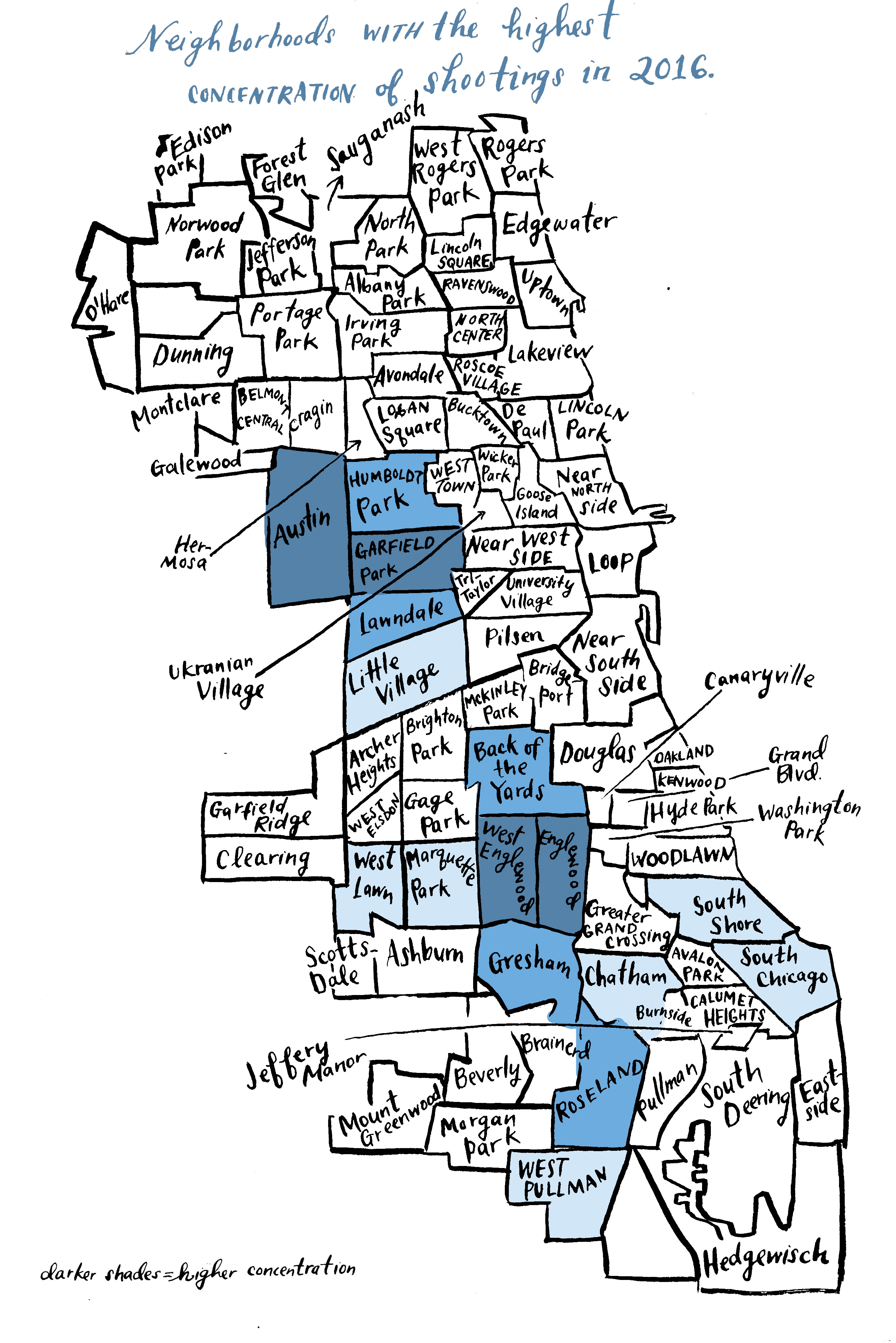
Source: Chicago Tribune.
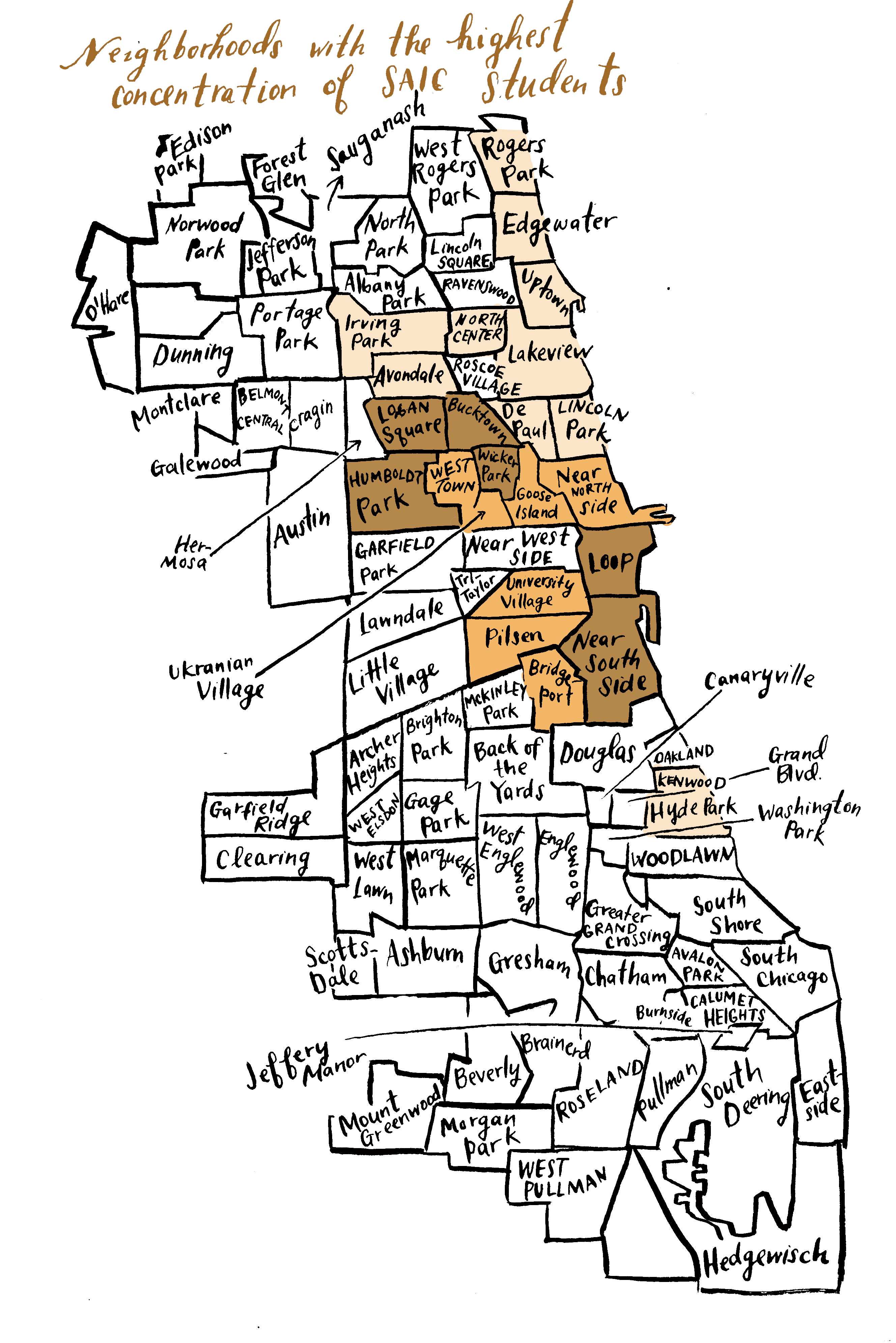
Source: SAIC Resident Life
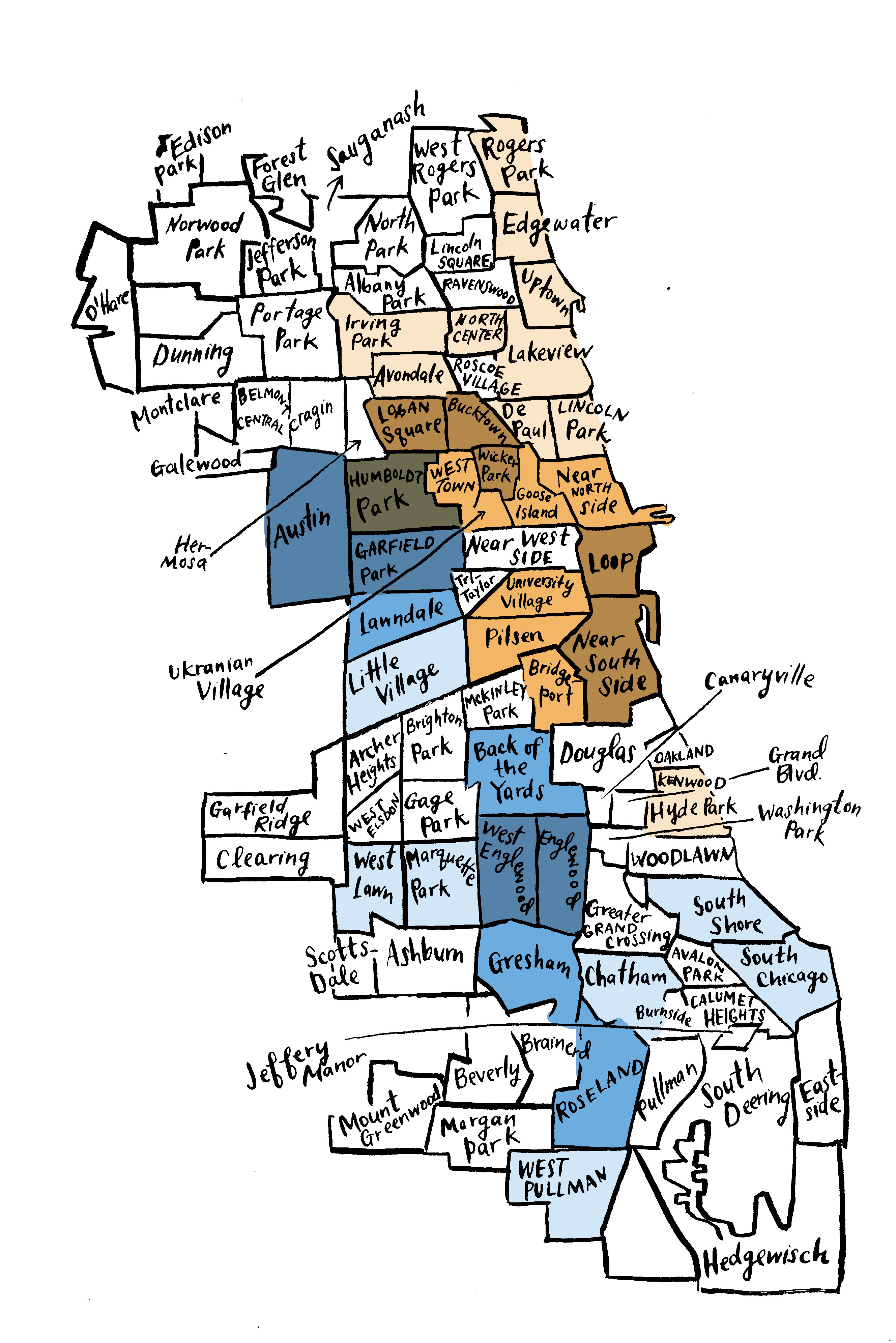
Problems around segregation aren’t getting any better. Lawmakers in Chicago continue to pass legislation that widens the socio-economic gap. The city approves projects that pump more resources into neighborhoods that are rapidly gentrifying rather than into neighborhoods that desperately need them.
The city’s Tax Increment Finance program (TIF) provides the opportunity to build resources in Chicago’s poor neighborhoods, but it has never been used that way. Instead, the funds generated by TIF are spent almost exclusively in wealthy and up-and-coming neighborhoods year after year. By mid-2015, Mayor Rahm Emanuel had spent 48 percent of TIF funds on projects inside the Loop alone.
In his term as mayor, Emanuel has also closed public schools and clinics in poor neighborhoods, and cut health benefits for retired city workers. Unsurprisingly, this disparity in resources is parallel with the rate of gun violence.
In 2016, a report from the Brookings Institute showed that the racial gap for unemployment is greater in Chicago than in any other large metro area in the United States. Black young adults in Chicago are seven times more likely than white young adults to be not going to school or working. Among 20- to 24-year-olds — an age group particularly susceptible to gun violence — the employment rate is just 47 percent for blacks, which is the lowest among the big cities. In comparison, 73 percent of whites in the same age range are employed.
On NPR this week, Democratic Illinois Congressman Danny Davis — whose grandson was shot and killed last year in Chicago — spoke to his concerns about poverty and economic disparity among young people in inner cities.
“They even talk about things like death and dying. And there’s a tremendous loss of hope. And of all the things to lose, I think nothing is worse or more difficult to overcome than the loss of hope,” Davis said.
In truth, there is probably no single cause behind the rapid hike in gun violence in Chicago. There are so many factors that have led to this problem that it’s impossible to pin down the most pivotal. It is our responsibility, however, as citizens of the city, to remain critically engaged with dialogue around gun violence, even if it isn’t immediately visible to us.
Here are a few things you can do to combat gun violence in Chicago:
